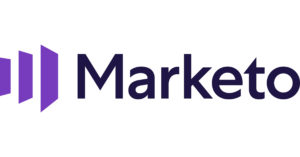First, congrats on getting started on Adobe Marketo! It’s a great, flexible and powerful marketing automation platform. You do have a bit of work ahead of you, but a strong implementation makes for much easier usage later. Here are a few things I’d recommend to keep in mind, based on my experience as a consultant with the tool.
Organization is important
Naming conventions and folder structures matter! I’d check out the Marketo Community for tons of best practices and recommendations. You’ll be happy to know that a lot of great naming convention templates already exist, as well as use cases for folder structures. The way that Marketo’s UI works, the names and folders you choose are going to be in your face a lot, so putting in the work to iron this all out from the get-go will pay some serious dividends.
The first thing you’ll want to decide is how you’re going to categorize your programs: by channel or by vertical? There is no one-size-fits-all answer; it really depends on how you plan to use the tool, your business needs and what you need to report. But, be forewarned: NOT deciding is definitely the wrong way to go here. So it’s time to pick a lane. (Check out a few other Marketo pitfalls to avoid).
So is user access and ownership structure
When getting started on Marketo, always have a plan on how you are going to roll it out to your team and your entire organization. Will you allow multiple teams to access the tool, or will you centralize access to a specific team, taking requests and building for others as needed? While there is no right or wrong answer, know that decentralized teams run a higher risk of errors, and increase the chances that your platform will end up an unruly mess.
There are some real horror stories out there. I know one where someone decided they really wanted to send an email to their ENTIRE database. So they did! And they didn’t take any other criteria into account. Guess what? It was a total disaster, and a huge portion of the database unsubscribed. Ultimately, their email sender reputation took a big hit. So, the decentralized approach definitely has its risks.
However, decentralization may be a better solution for global companies with separate teams handling localized campaigns. In this scenario, giving multiple regional groups the ability to create tailored campaigns can help increase agility and scale. But if you do decide to go this route, see my earlier advice on naming conventions!
Get to know the Marketo user community
It may sound strange to say that one of the best things about a modern marketing automation platform is the online community forum (what is this, 1997?!). But seriously, it’s an amazing collection of content and how-to’s that can be a treasure trove.
Because of Marketo’s large install base and the fact that it has been around for a while, there are thousands upon thousands of threads where users have asked questions and other users or Marketo employees have chimed in with helpful advice.
Chances are that if you’re stuck with something, run into an issue, or need guidance, you can find a relevant thread where another user has already asked and received thoughtful advice. But if you find yourself in uncharted waters and need to ask a question never before discussed, there is a good chance that you’ll get a response that same day – if not multiple.
The online community content complements the how-to user guides by taking the oftentimes dry and technical documentation and applying it to real world situations. Starting every new project or campaign plan by checking the community is a sure-fire way to save yourself some time and grief – and to avoid reinventing the wheel.
In the same vein, Marketo has a robust user group community that holds regular meetings in person. It’s a great networking opportunity and another way to learn about Marketo and how others have successfully implemented it for their companies.
Tokens, tokens, whose got the tokens?
One of the defining features of Marketo is its ingenious use of tokens for email personalization, campaign set up and lead scoring, among other applications. As you’re getting started on Marketo, take the time to learn about this all-powerful feature and make sure you’re fully leveraging tokens before you go too far.
Tokens can be set at the individual asset level (like email) or at the campaign folder level (which then sets that token value for every asset in the campaign). So understanding when and how to implement them will save you tons of time and effort down the line. If you were super excited to join the online community after reading the previous section, you may have already found the post about token use cases and best practices.
This post is a great example of both how helpful and insightful the Marketo community is, and how the use of tokens can really help you level up your marketing automation.
Drip it like water
Assuming you’ve already gone through the technical set up, the first and most exciting thing I would work on is building out engagement campaigns in Marketo. Hopefully, you have some email content already created that you’re migrating from another MAP, or you’ve already been planning your first email nurture campaign. Regardless, the engagement campaign program in Marketo is one of the platform’s crown jewels, and putting time in early in your build is worth it.
What makes the drip campaign program so special is how Marketo was able to package so much functionality and flexibility into a very marketer-friendly package. By building “streams” of email content, you’re able to create a list of emails that are sent to a segment of contacts at a frequency you define.
Contacts enter the streams as they become eligible and are sent each email at the cadence you set, in the order you set them. Once the contacts have received all emails, they either exit the program or sit in an inactive state. If you decide to add new content to the stream later on, Marketo will do the work automatically to send the new stuff to contacts that have already exhausted the stream content, and it will also serve that email to new contacts as they become eligible.
If you’ve used other MAPs, then you know just how challenging building all that logic out could be. Marketo figured out a way that makes it so easy that you would trust asking the intern to make the update on a Friday afternoon.
Get a quick win with a simple scoring campaign
When people hear of marketing automation, the first thing they think of is often lead scoring. So you might as well give the people what they want! If you have a lead scoring model already, give yourself a big pat on the back and start building (don’t forget to use tokens!!). If not, you can still get value from this feature by identifying the forms or actions that identify marketing qualified leads for your marketing/sales funnel.
This article is a great intro into setting up a lead scoring model in Marketo. It shows you how you can create a smart campaign to update the lead score when a form is filled out, as well as links to import pre-built, tokenized, scoring models. For a quick win, you can set up this smart campaign to give a huge amount of points to the MQL form submissions so they are set to MQL immediately.
Then, once you have more lead activity data and other conversion points, you can come back to this model, update it and review with your sales team to create a more refined approach. A quick and easy lead scoring model buys you some time to do the other things that the sales and exec teams don’t care so much about, like naming conventions and organization! Yay!












